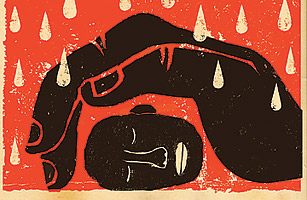
There are higher-yielding varieties of groundnut than those that farmers in Malawi tend to plant, but getting them to switch is tough. Better seed is pricey, increasing their risk. So researchers from the World Bank ran an experiment. With local NGOs, they offered the farmers loans. Some loans even came with a crop-insurance policy: if the season was dry and the yield a dud, the debt would be forgiven. The farmers’ risk was lowered. Of farmers offered conventional loans, 33% signed up. With the added incentive of insurance, 18% did. The researchers were puzzled. It’s been more than 30 years since microfinance began its fantastic rise, spreading billions of dollars in credit to hundreds of millions of overlooked borrowers around the world. Insurance is the next big promise of financial services for the poor. But there aren’t many takers. That’s not from lack of interest on the part of suppliers. The Gates Foundation has plowed millions of dollars into microinsurance initiatives, and in June, LeapFrog Investments raised $44 million for the world’s first microinsurance-investment fund. The few billion uninsured people worldwide have big insurers angling for their business–with not many standout results. “We haven’t really figured out a good model,” says Monica Brand of the microlending juggernaut ACCION International. Xavier Giné, a World Bank economist in Malawi, has seen microinsurance sputter time and again, even in areas where microloans thrive. Unforeseen economic behavior is driving these opposite outcomes, he says. “When we think about credit, lenders need to trust the borrower. But in insurance, it’s the exact opposite. You have to trust that the insurance company will pay the claim.” It’s hardly a stretch that people new to financial institutions don’t. In India, Giné has found, it’s actually risk takers who are more willing to buy insurance policies: the thing meant to hedge against risk is seen as risky. And perhaps not without reason. Insurers didn’t pay off in Bangladesh in the 1990s, one of the earliest attempts at microinsurance. In Portfolios of the Poor, New York University economist Jonathan Morduch and his co-authors toss out other reasons microinsurance may be a hard sell. First, being poor is not without complications, and that’s part of what makes a loan attractive. Sure, microcredit is typically meant to help build a business, but cash is fungible–if there’s no money for dinner one night, a line of credit, whatever its intent, solves the problem. Not so for insurance, which asks people to decide in advance which of the many risks they face they should hedge. Plus, even without formal insurance, most people already have some version of a safety net: friends, family and–in truly catastrophic situations–government. “The challenge for insurance is to beat those other mechanisms, not to beat nothing,” says Morduch.